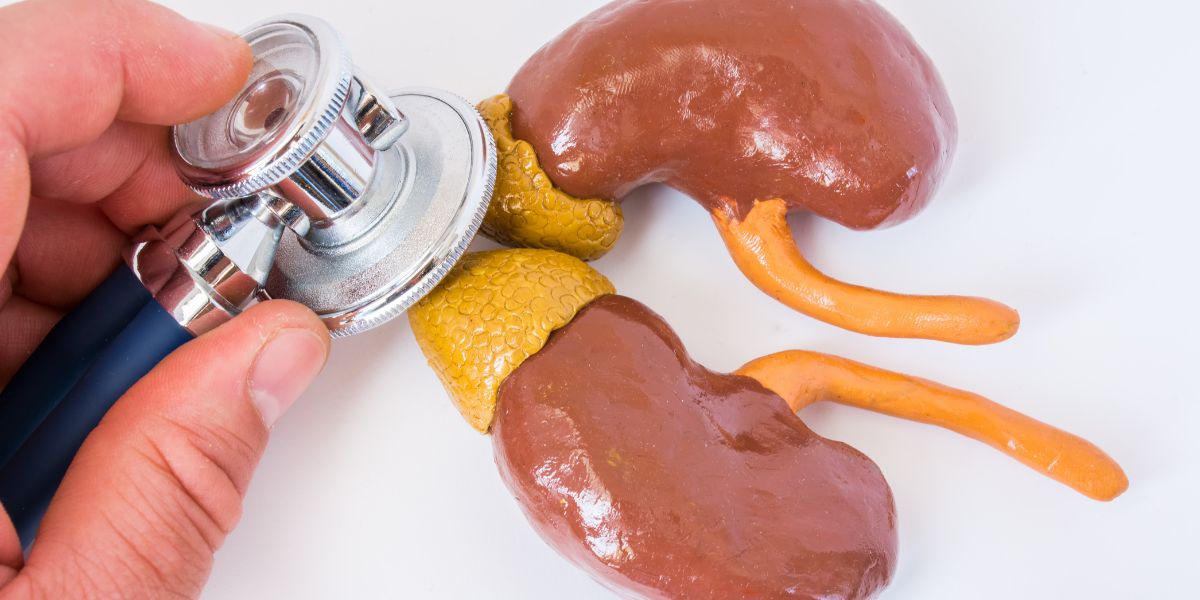Dialysis is the separating out of the contents of liquids. Kidney dialysis involves separating out waste products from the blood and removing them from the body, thus replicating the process performed by working kidneys.
Kidney dialysis will be required if the kidneys become damaged and can no longer function well enough. This stage is known as end stage renal disease (ESRD).
Why is kidney dialysis needed?
If kidneys become damaged, which is more likely to happen in people who have had high blood sugar levels for a number of years, the kidneys can continue working albeit at reduced effectiveness.
Doctors can measure how well your kidneys are functioning by measuring their glomerular filtration rate (GFR).
Dialysis will usually be considered if the kidneys filtering ability reduces to 10%.
- Read more about diabetic nephropathy
How long will I be put on dialysis for?
Usually if dialysis is needed, you will be on dialysis either for the rest of your life or until a kidney transplant can be given.
The NHS reports that there is a shortage of available kidneys for transplantation.
About half of patients with ESRD will be given a transplant and half live on one of the forms of dialysis; either haemodialysis or a form peritoneal dialysis.
Haemodialysis
In haemodialysis, blood is filtered by a dialysis machine. Haemodialysis typically involves spending 3 separate sessions of 4 hours on the dialysis machine a week.
When on the machine, blood is taken continuously from a blood vessel (usually this will be from your forearm) into the machine. The machine filters waste products out of the blood and returns the filtered blood back into your body.
Peritoneal dialysis
The peritoneum is a membrane which lines our abdomen and, because it includes a rich quantity of small blood vessels , is capable of filtering waste products out of the blood in a similar way to the kidneys.
Two types of peritoneal dialysis exist:
Continuous ambulatory peritoneal dialysis (CAPD)
Continuous ambulatory peritoneal dialysis (CAPD) is a form of dialysis in which dialysis fluid is delivered into your abdominal cavity via a catheter. The fluid remains in the abdominal cavity for a number of hours and enables the peritoneum to filter waste products out of the blood into the dialysis fluid.
After several hours, the dialysis fluid is drained out and new dialysis fluid can be delivered. It usually takes about 30 to 40 minutes to drain the fluid into the peritoneal cavity.
Automated peritoneal dialysis (APD)
Automated peritoneal dialysis (APD) is an alternative form of peritoneal dialysis in which an APD machine controls the drainage of fluid. You need to be connected to the machine for 8 to 10 hours so this will happen overnight as you sleep.
During the day you will keep dialysis fluid in your peritoneal cavity which will be drained away in the evening.
Advantages and disadvantages of kidney dialysis
Advantages of haemodialysis
- You do not have to undergo dialysis each day
Disadvantages of haemodialysis
- You will need to plan activities around your dialysis sessions
- If you travel for a number of days, you will need to give advance notice to ensure the place you travel to can give you access to the dialysis machine
- There may be charges to use a dialysis machine in other countries
- Diet and fluid intake are restricted
Advantages of peritoneal dialysis
- It is easier for peritoneal dialysis to fit in with work and other activities
- It is easier to travel if on CAPD
- There are fewer restrictions on diet and fluid intake
Disadvantages of peritoneal dialysis
- Peritoneal dialysis needs to be carried out each day – and CAPD will be carried out through the day
- Peritoneal dialysis can lead to peritonitis – infection of the peritoneum
- Peritoneal dialysis can lead to lethargy or malnutrition resulting from losses in protein
- Weight gain is a possible side effect
Periotonitis
People undergoing peritoneal dialysis can expect to experience peritonitis about once every 2 years.
Periotonitis is an infection of the peritoneum which brings symptoms such as severe abdominal pain, episodes of shivering, fever and vomiting.
If you experience these symptoms, contact your GP, your local out-of-hours service or NHS Direct on 0845 4647.
Life expectancy on dialysis
The NHS quotes the following figures for how long people with diabetes tend to live on dialysis for.
- 70% live for at least 1 year – 30% live for at least 5 years – 10% live for at least 10 years
However, the NHS notes that figures are based on the past and modern treatments for diabetes, blood pressure and other conditions may help to improve life expectancy beyond these figures.








